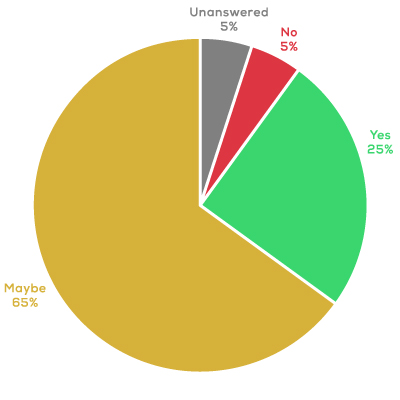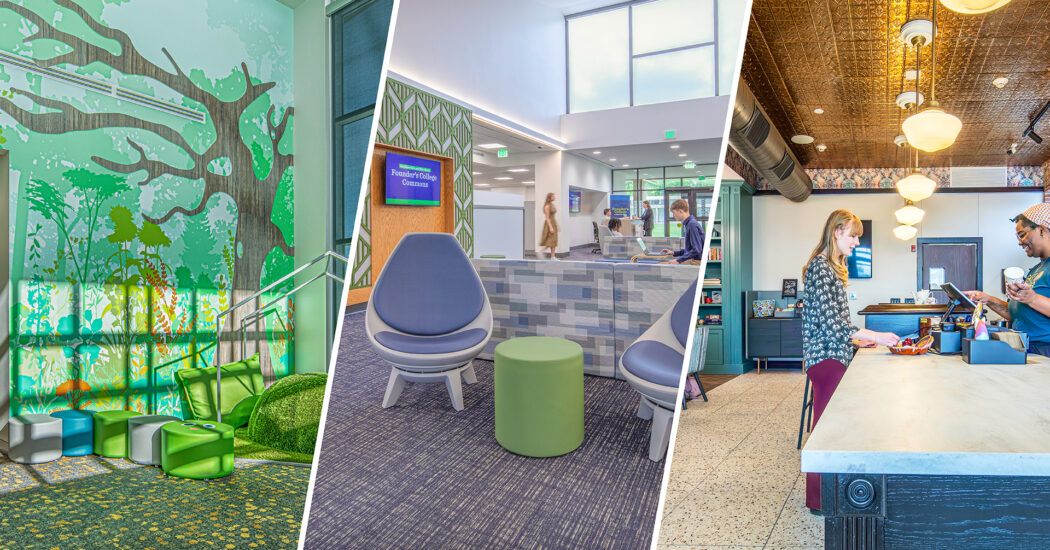How Higher Ed Facilities are Moving Forward After COVID-19
-
Category
Studio-Higher Ed -
Posted By
Schmidt Associates -
Posted On
Jun 24, 2020
In mid-May, we surveyed higher education institutions across Indiana. We wanted to understand what they’d seen so far as a result of COVID-19 and their plans for campus in the future. Based on our findings, we offered insights and potential solutions for some of their facility challenges during a moderated discussion in mid-June. Below are a few highlights from our research and conversations.
With online learning taking a front seat, the increase in technology in the classroom that was already underway has now been accelerated.
When asked if they had plans to retrofit classrooms for increased distance learning, respondents were largely undecided at the time of the survey. Many felt they already had the spaces and tools they needed to create successful online education content.
Do you plan on retrofitting your classrooms for improved distance learning?
Do you have the facilities you need to create great online content?
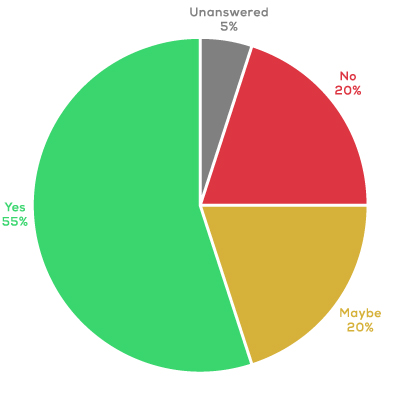
After the survey, we learned these answers had shifted in many cases. Even though they had been actively ramping up technology capabilities on campus, some institutions discovered shortfalls. Developing online content for active learning courses, such as dance classes, emerged as a concern. How to virtually replace collaborative lab or studio experiences that many majors require is another challenge.
While most universities will welcome students back to in-person classes at some level for fall semester, technology will continue to be a sticking point as in-person class sizes shrink, and virtual learning is permanently integrated into many courses.
A few recommendations include:
- Making mobile filming equipment available for instructors to utilize
- Creating a filming studio with green screen
- Providing focus rooms with necessary editing software to make video and multimedia assets into successful course content
- Outfitting classrooms and labs with video conferencing capabilities for hybrid in-person and virtual instruction, including high quality audio for all participants
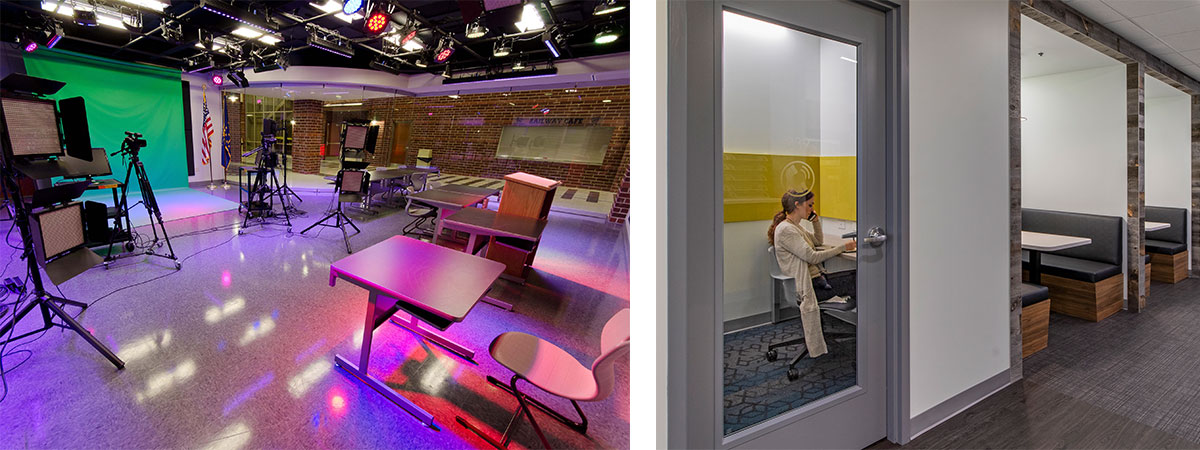
Filming Studio and Focus Room
Campuses must get creative to encourage social distancing and reduce personal contact across all facilities.
When asked to choose the types of physical modifications their institutions planned to make to campus facilities, respondents most commonly cited enhanced cleaning practices, implementation of plexiglass dividers, and occupancy measures.
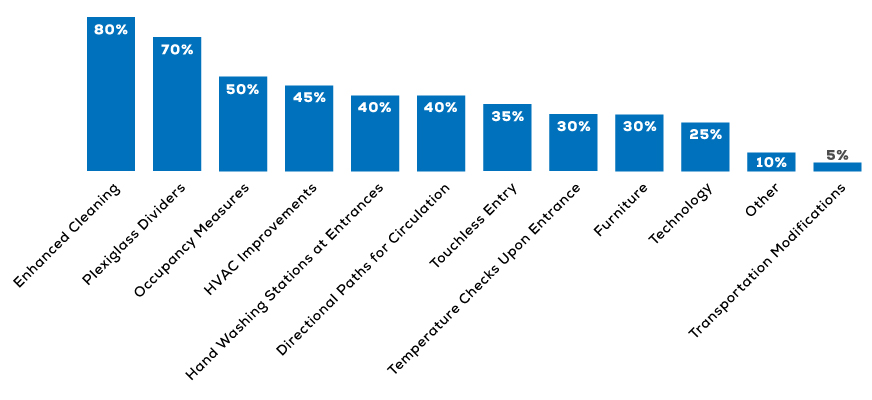
What we’re now hearing is, while modifications like the above will be made to help make social distancing and good hygiene easier, students will have to take responsibility for their own protection and safety. Individuals will need to commit to modify their personal behavior—such as wearing masks and keeping their distance—for any university efforts to be successful.
Plexiglass dividers appear to be a popular modification consideration among colleges and universities. These provide both a physical barrier to prevent virus transmission and a method of encouraging individuals to keep a safe distance. They are also easily sanitized.
These types of dividers can be used in a variety of types of spaces and applications. A few that may be useful for higher education facilities include:
- Check-in or service desks
- Food service areas and dining facilities
- Desks or lab stations
- Independent study areas
- Isolation/quarantine facilities and regular health center/clinic facilities
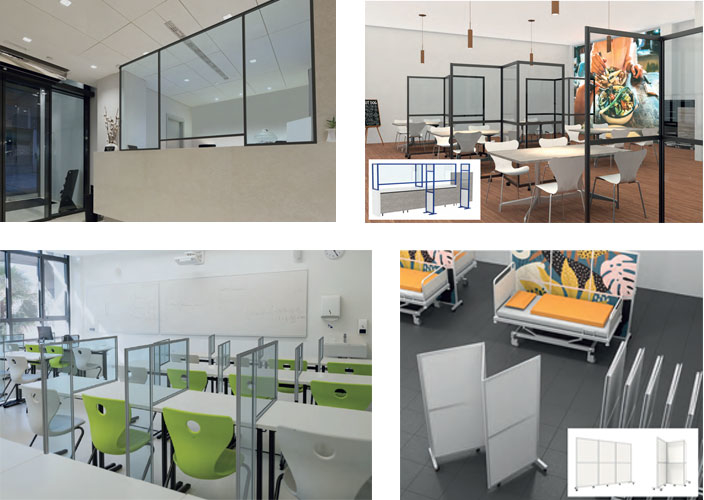
Imagery courtesy of Hamilton Exhibits
It is becoming increasingly clear that HVAC improvements are necessary to help prevent virus transmission.
Several universities raised questions around HVAC’s role in prevention. Since conducting our survey, the American Society of Heating, Refrigerating and Air-Conditioning Engineers (ASHRAE) also published specific guidelines for reducing COVID-19 transmission through HVAC.
While face coverings block large particulates in the air carrying the virus, small aerosol particulates must be addressed through the ventilation system. If not modified and maintained properly, these systems can contribute to the spread of viruses through the air.
Our engineering team is advising institutions to follow ASHRAE’s COVID-19 guidelines for schools and universities to improve their indoor air quality. These guidelines focus on five areas of concern:
- Increasing ventilation – Within limits of equipment
- Controlling air movement – Lower air velocity
- Filtering particulate matter – MERV 13 filters are recommended
- Disinfecting air – UV and other methods
- Controlling temperature and humidity – 40-60% RH is ideal
It is also a good time to evaluate your overall system design and ensure your buildings are zoned properly.
About the Survey
Our survey was conducted May 7-22, 2019. Respondents included individuals from 10 Indiana colleges and universities at 12 campus locations across the state. Below is a breakdown of respondent roles and university types.
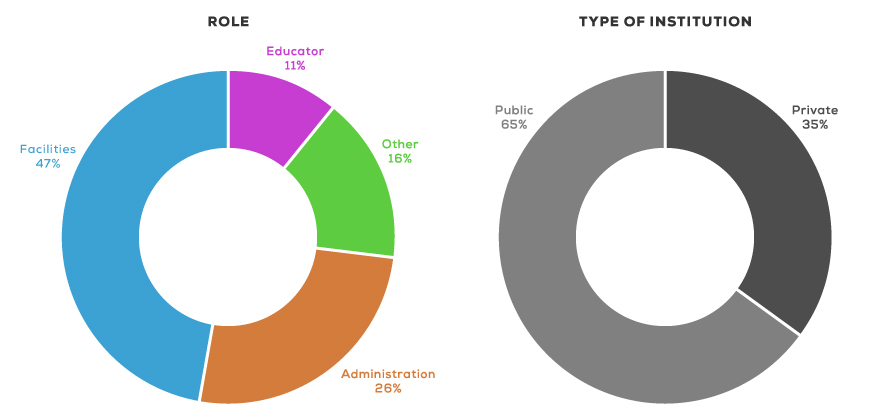
If you have questions about our survey or your specific facility needs, contact one of our higher education design experts.





